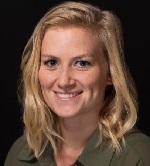TTG Report
Impact of carbon radiation versus photon radiation on immunotherapy - PDF Version
Host Institute: National Center for Tumor Diseases (NCT), Deutches Krebsforschungszentrum (DKFZ), Heidelberg, Germany
Date of visit: 18-31 July, 2020
With this report, I conclude my work visit, which was supported by the technology transfer grant (TTG) of the European SocieTy for Radiotherapy and Oncology (ESTRO), to the National Center for Tumor Diseases (NCT) group of Prof. A. Abdollahi at the Deutches Krebsforschungszentrum (DKFZ) of Heidelberg in Germany. During this two-week visit, the goal we set was to determine the potential difference in radiobiological effectiveness (RBE) and immunogenicity between photons, protons, and carbons. This collaboration is part of my PhD research position at the Department of Precision Medicine of Maastricht University in The Netherlands. In my project, I test various approaches to identify optimal treatment combinations to enhance the effect of immune therapy in cancer.
Our lab has been investigating a promising treatment regimen, in which X-ray radiotherapy is combined with a tumour-specific immunocytokine. We have observed great synergy between the two modalities (Rekers, OncoImmunol, 2018). This treatment has been approved for the phase 2 clinical trial ImmunoSABR (NCT07020146).
Particle therapy is increasingly used in Europe and improves normal tissue sparing compared to X-rays because it can deposit a high radiation dose at the tumour site (Bragg peak). The DKFZ institute offers a wide range of particle radiotherapy including carbon-ion and proton radiotherapy. We are interested in combining our immunocytokine particularly with carbon ions because carbon ions could induce greater immunogenicity which is advantagous for immunotherapy. Carbon ions offer a higher linear energy, better relative biological effectiveness (RBE) and it produces more complex DNA damage than X-rays. These properties might translate into greater immunogenicity.
With these notions in mind, we hypothesised that charged particle radiotherapy would be more immunogenic than photon therapy, which should lead to an increased therapeutic efficacy upon its combination with immunotherapy. The goal of this collaboration was to compare the treatment effects of X-ray and immunocytokine with carbon ions and protons combined with immunocytokine in an in-vivo model. Little research has been done in this particular field of particle radiotherapy. Therefore, we were determined to first perform dose comparisons and RBE values for our models. In the past, we have performed a clonogenic survival assay to establish the biological effect in a 2D model (work which was also supported by ESTRO).
In this visit we proceeded with the establishment of RBE in an animal model to compare and verify the results that had been obtained in an in vitro setting to those that would be expected in an in vivo setting. Accordingly, we used an experimental set-up of five radiotherapy fractions of photons, protons (2, 3, 5 Gy) and carbon ions (1, 2, 3, Gy) in a murine colon and lung carcinoma model into which tumours were injected unilaterally to the flank. Treatment efficacy was determined on tumour growth over time (Fig. 1). The data is currently under analysis.
.png.aspx)
Figure 1 : An example of survival periods of a colon carcinoma in-vivo model based on comparison of radiotherapy types for 5 x 2 Gy therapies
.png.aspx)
Figure 2 : Vertical beam set-up for proton and carbon irradiation at the Heidelberg Ion-Beam Therapy Center (HIT).
In the final experiment, the most promising RBE values that we deduce from this visit will be selected for combination with immunotherapy. Through performance of this project, we will be able to provide important data with respect to in vitro/in vivo translatability and especially through comparison of radiotherapy on the basis of X-rays and proton and carbon particles. Special attention will be paid to the enhancement of therapeutic benefit regarding immunotherapy.
Apart from obtaining data, the visit enabled me to work with particle beams (Fig. 2) and I was able to leave a little bit of time to be a tourist and explore the Heidelberg castle ruin in the city centre.

Damiënne Marcus
PhD student in tumour radiation/immunology/hypoxia
Department of Precision Medicine
The M-lab, Maastricht University
Maastricht, The Netherlands
d.marcus@maastrichtuniversity.nl